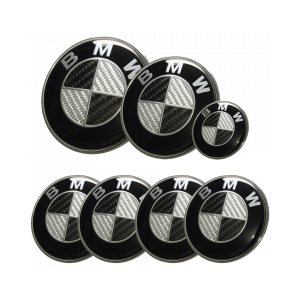din 3760 oil seal
Understanding DIN 3760 Oil Seals A Comprehensive Guide
In the world of mechanical engineering and industrial applications, oil seals play an essential role in maintaining the efficiency and longevity of machines. Among various standards and specifications, DIN 3760 stands out as a crucial reference for oil seals, providing guidelines for design, dimensions, and performance. In this article, we will explore the key aspects of DIN 3760 oil seals, including their design features, materials, applications, and maintenance considerations.
What are Oil Seals?
Oil seals, also known as shaft seals or rotary seals, are devices used to seal rotating shafts and protect machines from the leakage of oils and lubricants. They primarily serve to prevent the ingress of dirt, dust, water, and other contaminants while retaining the lubricating fluids necessary for the proper functioning of mechanical components. The effectiveness of an oil seal is critical in enhancing the efficiency of machinery, reducing wear and tear, and preventing costly downtimes.
The DIN 3760 Standard
DIN 3760 is a German standard that specifies the design and dimensional characteristics of oil seals for static and dynamic applications. This standard ensures that oil seals conform to specific criteria, providing a benchmark for manufacturers and users. The DIN standard outlines various parameters, including the dimensions, tolerances, materials, and performance specifications, ensuring that oil seals meet the needs of diverse industrial applications.
Design Features of DIN 3760 Oil Seals
A typical DIN 3760 oil seal comprises several key components
1. Outer Ring The outer part that remains stationary and is typically fitted into the housing or casing. 2. Inner Ring The part that rotates with the shaft, forming the dynamic sealing surface. This surface must be highly polished to reduce friction and wear. 3. Sealing Lip This flexible component makes contact with the shaft, creating a seal that prevents fluid leakage. The lip’s design is crucial for its effectiveness and durability. 4. Spring Many designs feature a spring that exerts pressure on the sealing lip, ensuring consistent contact with the shaft to maintain an effective seal during operation.
Materials Used
din 3760 oil seal

The materials selected for DIN 3760 oil seals significantly impact their performance and application. Common materials include
- Nitrile Rubber (NBR) Known for its excellent resistance to oils, fuels, and heat, NBR is a popular choice for oil seals in various applications. - Fluorocarbon (FKM) This material offers superior chemical resistance and is suitable for high-temperature applications, making it ideal for processes involving aggressive fluids. - Polyurethane With excellent abrasion resistance and flexibility, polyurethane is used in specific applications where durability and resilience are needed.
Applications of DIN 3760 Oil Seals
DIN 3760 oil seals find extensive application across various industries, including
- Automotive Used in engines, transmissions, and differentials, oil seals prevent lubricant leaks and protect internal components. - Industrial Equipment Machinery such as pumps, compressors, and gearboxes relies on effective sealing to operate smoothly and efficiently. - Agricultural Machinery Intractors and other farming equipment benefit from robust oil seals that withstand harsh operational conditions.
Maintenance and Replacement Considerations
To ensure the longevity and efficiency of oil seals, regular maintenance checks are essential. Signs of wear, such as oil leaks or unusual noises, may indicate the need for replacement. Choosing the right size and material conforming to the DIN 3760 standard is crucial when replacing oil seals. Users should also consider factors such as shaft condition, operating environment, and specific application requirements to ensure optimal performance.
Conclusion
DIN 3760 oil seals are vital components in various mechanical systems, offering protection against fluid leakage and ensuring the smooth operation of machinery. Understanding the specifications and features of these seals is essential for engineers and maintenance professionals to select the right products for their applications. By adhering to the DIN 3760 standard, manufacturers can guarantee the quality and reliability of oil seals, contributing to the overall efficiency and longevity of industrial equipment. Whether for automotive, industrial, or agricultural use, the importance of selecting high-quality oil seals cannot be overstated, as they play a crucial role in operational excellence and cost-effectiveness.
-
Understanding the Front Main Engine Seal: Purpose, Maintenance, and Installation
News Jul.29,2025
-
Understanding O-Rings and Seal Rings: Types, Applications, and Custom Solutions
News Jul.29,2025
-
Understanding Crankshaft Oil Seals: Rear Seals, Pulley Seals, and Their Role in Engine Integrity
News Jul.29,2025
-
The Importance of Front and Rear Crankshaft Seals in Engine Performance and Oil Management
News Jul.29,2025
-
Crank Oil Seals: Functions, Types, and Cost Considerations in Engine Maintenance
News Jul.29,2025
-
A Comprehensive Guide to O-Rings and Seals: Types, Materials, and Global Applications
News Jul.29,2025
-
Mastering Diesel and Performance Engine Maintenance: A Guide to Critical Oil Gaskets
News Jul.28,2025
Products categories















